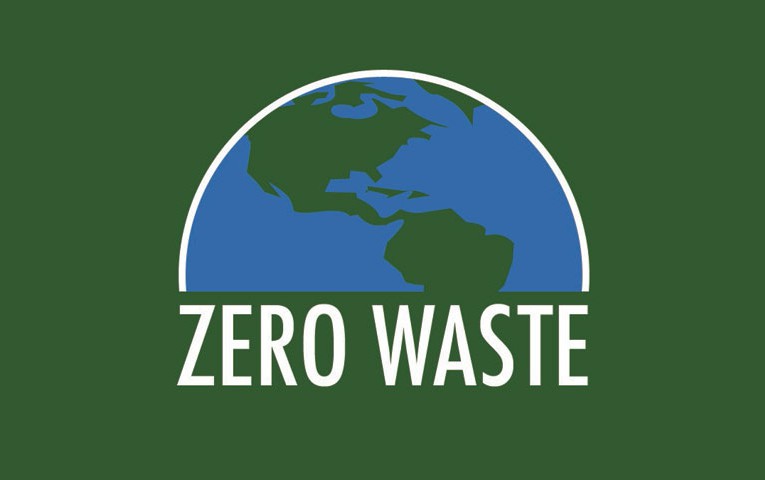
By Michelle Millet
When I recently inventoried the contents of my family’s garbage and recycling bins, I found that most of what was inside these containers came from food-related packaging. For ideas on how to reduce this type of waste I turned to one of my favorite books on this topic, “Zero Waste Home” by Bea Johnson.
In her book, Bea describes how shopping in bulk has allowed her to eliminate most grocery-related packaging. She uses cloth bags when purchasing dry bulk items like flour, sugar, beans and cereal. She puts loose produce in mesh bags, and she brings small jars for “wet” bulk items like honey or peanut butter.
She reuses empty bottles for liquids like olive oil, vinegar and syrup, and large-size jars for counter items like meat, fish, cheese and deli item.
While I think these, and some of the other ideas she shares, are wonderful, I’ve resigned myself to the fact that I’m not going to commit to the level of organization required to shop in this way. These ideas have inspired me, though, to look for ways to reduce packaging while shopping that don’t require a significant amount of pre-planning.
I’ve stocked up on lightweight nylon bags for carrying my groceries. They can be rolled into a self-contained pocket that makes them compact enough to keep conveniently stored in places like my car, bike basket or purse.
When I find myself bagless, which occasionally happens when I’m making an impromptu stop for a handful of items, I pass on a bag all together and just load my items directly from the shopping cart into my car.
A little over a year ago, we started buying milk in reusable glass containers. When they are empty, we put them in the dishwasher, which gets them clean enough to avoid lingering odors while they sit on the counter and wait to be exchanged for full ones on our next shopping trip.
In my more organized moments, I do make it to the store with my own containers ready to shop the bulk aisles for things like pasta, popcorn kernels, pretzels, cereal and loose-leaf tea.
But more often than not, I arrive at the grocery store unequipped to shop in bulk, and find myself shopping the pre-packaged aisles where I keep in mind that not all packaging is created equal.
When glass and paper products are recycled, they are made into equally recyclable glass and paper products. When plastic is recycled, on the other hand, it is really “downcycled” to an inferior quality of plastic that cannot be recycled again. So when I do purchase pre-packaged items, I try to avoid plastic and instead opt to buy items that come in glass or cardboard.
For example, I’ll choose items like mayonnaise and mustard in glass jars rather than plastic containers, and I’ll buy pasta that comes in a box instead of plastic wrap. I even found a brand of yogurt I like that comes in a glass container.
I’m always keeping my eye open for other plastic packaging alternatives. At the Davis Food Co-op, I found brands of dental floss and laundry detergent that are packaged in cardboard instead of plastic.
Instead of using liquid shampoo, I’ve switched to a bar shampoo, I also found at the Co-op.
While shopping at Rite-Aid the other day, I spotted small bins filled completely with packaging-free tweezers, nail clippers and nail files.
A favorite after-school snack of my son’s is a croissant from Nugget Market. Instead of buying them pre-packaged in a rigid plastic container, I pull a few from the bakery cabinet and put them either in my own bag or in a paper one provided by the store. If my son is with me, I skip the bag altogether and just hand one to him.
When we host a family-friendly get-together, I no longer purchase juice boxes for the kids. Not only are they not recyclable, the little plastic straws and plastic wrappers they come in never seem to end up in the garbage. Instead, as a treat for the kids, I buy juice drinks squeezes, which come in recyclable glass bottles.
Shopping for a dessert to bring to a friend’s party the other day, I was happy to see that Nugget is now selling some of its baked cookies and pies in cardboard containers rather than the rigid plastic ones.
While we are on the topic of cookies, Whole Foods offers what I like to describe as a cookie bar, where I can pick and choose from 10 to 15 different treats and load them into my own container, or use one of the paper bags provided.
My family is a long way from living a packaging-free life. My daughter’s favorite yogurt comes only in a plastic container, and my son’s favorite bread comes wrapped in multiple layers of plastic. On occasion, despite my efforts to avoid rigid plastic containers, the desire to eat the baked goods contained in them overrides my desire to live a zero-waste lifestyle.
So while I don’t see myself making my own granola bars anytime soon, I will continue to look for things my family can do to lessen our impact by reducing our waste.
Thanks Michelle. You never fail to come up with at least one practical suggestion that I had not yet found !